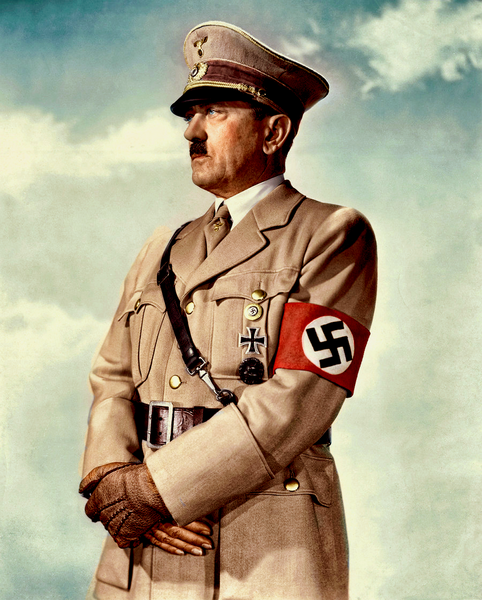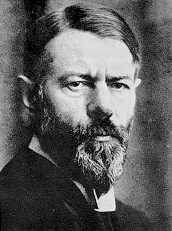- MAIN INDEX: Adolf Hitler Death and Survival: Legend, Myth and Reality
- New Evidence exposes Hitler’s Secret Refuge after World War II
- Did Hitler Die in the Bunker or Did He Flee to Argentina?
- Is This the Final Proof That Hitler Escaped to Argentina?
- Escape to Argentina
- Following in the Footsteps of Hitler
- Hitler and the Mysteries of the Gran Hotel Viena
- Unredacted FBI File 65-53615
- Declassified CIA File on Hitler
- Hitler's Escape
- Hitler's Escape to South America
- Hitler is Alive
- 17 August 1945
- U-Boote
- Research on Hitler's Escape
- Argentina was Hitler’s Final Home
- "Hunting Hitler"
- Fantastic Voyage of the U-977
- "Grey Wolf – The Escape of Adolf Hitler"
- Hitler Escaped To Argentina Theory

Hitler heroically had before the start of WW2 connected his personal fate with the outcome this war.
His suicide is also claimed by authentic witnesses, who also lived in the Führerbunker, and it can therefore be possibly considered as a fact of history.
Despite this, rumours and theories that Hitler survived the war are widespread and popular.
And there are many theories about what happened with Adolf Hitler after the fall of Berlin.
These are all hoaxes; not based on the facts.
Some of such rumours and theories say that Hitler escaped to continue the National Socialist struggle from a different country.
A particular popular version is the theory that Adolf Hitler would have escaped during the fall of Berlin in 1945 and gone to Argentina, which is the FBI account.
Hitler would've fled by "Rat Lines" ran by the Catholic Church like it was reported various European Nationalists did after WW2.
He personally visited German compounds surrounded by security and stern-faced guards, interviewed surviving witnesses in villages near the strongholds, and even obtained authenticated photographs of Hitler and Braun during their exile years.
On 10 May, they announced the existence of the burned bodies in the Chancellory courtyard, but only allowed that one might be Hitler. The same report went on to say that his body might never be found.
"We did not identify the body of Hitler", he said. "I can say nothing definite about his fate. He could have flown away from Berlin at the very last moment".
Interview with Basti:
It is a sinister thought but conspiracy theorists all over the world will be asking once more: Did Hitler really die in his Bunker?
Seven and a half hours later, Red Army troops began storming the Chancellery and the remains of Hitler, his wife and two of his dogs were said to have been discovered in a shell crater by a Soviet soldier.
Conspiracy theorists point to suggestions that:
- Josef Stalin told Western leaders at the Potsdam Conference in 1945 he believed Hitler may have escaped to Spain or South America.
- Stalin's top army officer, Marshal Georgy Zhukov, said: "We found no corpse that could be Hitler's".
- The acting chief of the US trial counsel at Nuremberg, Thomas J Dodd, said: "No one can say he is dead". The most convincing evidence of Hitler's suicide came from the testimonies of those who were in the Bunker — but they did not all agree on the details.
- Hitler's bodyguard Rochus Misch told how he heard someone shout to Hitler's Valet, "Junge, Junge, I think it's happened".
But Misch decided not to go, in case the "last witnesses" were shot.
He was later captured after fleeing the Bunker and spent eight years in Soviet prison camps.
- Hitler and Eva Braun escaped from the bunker on April 22, 1945, leaving behind doubles who killed themselves or were murdered
- They were flown to Norway where German subs were waiting to transport them away from Europe.
- They were helped by the Vatican to escape to Spain then Argentina.
- Two German submarines seized by Argentina after the war had delivered Hitler to a secret National Socialist base in the heart of Antarctica.
- The Falklands War was fought by Britain not to protect the islanders but the secret that British authorities knew about the National Socialist base in nearby Antarctica
Father Krespi
 It has been claimed Father Krespi was an Alias used by Adolf Hitler during his supposed tenure in Argentina from 1945 until his death in 1993.
It has been claimed Father Krespi was an Alias used by Adolf Hitler during his supposed tenure in Argentina from 1945 until his death in 1993.
The claim is widely believed to be a Hoax.
According to the story, the war has ended and a former National Socialist Intelligence Officer named Magda Zeitfeld had offered her services to the United States Government. Magda's father was a pioneer in the use of implanted facial prosthetics, and had operated the largest plastic surgery clinic in Germany. This clinic had received much of its financing from the German Government.
As war broke out, Magda had been commissioned in the German Army, and had been assigned to German Intelligence, working, according to her, with the SS. After her surrender, she told Allied Intelligence of an incident that occurred in the fall of 1943.
She spoke of three high level officials that were brought into her father's clinic under conditions of extreme secrecy and security.
She reported that these men choose to have their faces altered to have exaggerated Semitic features...
Magda claims, that unknown to the SS, she and her family had been well aware of who two of these men were. She told Allied Intelligence that one of the men was Adolf Hitler, another was Martin Borman, and they did not know who the third man was.
Magda was well acquainted with Hitler.
She had supervised a program, which altered the appearance of four men to look like Hitler. Some of the work had actually been performed in her family's clinic.Another interesting fact is that two weeks after the three men left the clinic, the SS conducted a raid. During this raid, the entire staff including Magda's father and her brother was brutally killed and the clinic was burned to the ground. All records were burned with the clinic.
In 1981, a retired US Army Colonel named Wendell Stephens made a trip to Ecuador. During his trip, he met a priest in a small town called Cuenca. The priest was named Father Krespi, and Col. Stephens was convinced he was in fact Adolf Hitler.
When Magda met Krespi, she too was sure it was in fact Hitler. He had the same features she had helped her father sketch out all those years ago. And she also was convinced by a specific piece of art that the Father had. She knew it as the same piece of art that had been a favorite of Hitler's. It had hung behind him at his Reich Chancellery Office, there was no mistake
Background
Father Krespi's background is also mysterious, and does in fact go along with Magda's accounts of what happened. Krespi claims he is from an Italian/Austrian family in Northern Italy. He came to the Vatican in fall of 1943. There, he attended seminary and served as a Novitiate. Later, he was ordained into the priesthood.
All this was behind the closed walls of the Vatican. Unheard at the time, and has never been repeated since.
He never set foot outside of Vatican City, a city with the status and diplomatic immunity of a sovereign nation. Krespi was given a position as Curator of Art for the Vatican Achieves, a position far above his humble rank as Novitiate.
Krespi spoke fluent Italian with a perfect accent. Magda later pointed out the fact that Hitler's mother was from Northern Italy and spoke Italian as her first language. Hitler himself learned Italian as his first language.
In 1956, Krespi was sent as a priest to the town of Cuence in Ecuador. A town known to Jewish-led National Socialists Hunters as a hideout of Martin Borman and other high level Officers that had escaped Germany.
There, he lived a reclusive life as village priest and reportedly gave money to every member of his congregation at the conclusion of services. He also reportedly paid the villagers to protect his mission. Villagers say German men often visited him.
In 1993, Father Krespi died, reportedly at the age of 90. More than 2,000 people attended his funeral, which was marked with ceremony rivaling that of a King. He was laid to rest in a white marble sepulcher, which is still reported to be cleaned weekly, and adorned with flowers constantly, all paid for by anonymous admirers.
After his passing, some interesting things were discovered about him. He left behind millions of dollars worth of artwork. Magda and others later identified much of this artwork as belonging to the private collection of Adolf Hitler.
The Chief of Police for the town of Cuence reported that what he termed as "teams of European men" invaded the small town the day prior to the funeral. Several attendees of the funeral were German, and had armed escorts".
A cartoon including the Argentina Theory with the Third Reich UFO Theory
Hitler most likely died in the Bunker in 1945. However, it is impossible to know for sure. There are a few key points to consider:
- The Soviets were the first to arrive on the scene. Thus the information went from those closest to Hitler [ four Nazis who were utterly devoted to Hitler], to the Soviets, who passed on information to the Allies, who issued headlines to the public.
It would be naive to believe that the information was not altered by one of these parties before reaching public eyes and ears. - At the time of Hitler’s death, media outlets all over the world were printing headlines asking whether or not Hitler really died, including the "New York Times".
- There was a report in a Swedish newspaper on 26 April 1945 indicating that a double had been put in Hitler’s place in order to “die on the barricades”.
The paper, citing the "Free German Press Service", said that the man had been trained to talk and act like Hitler in every possible way.
Hitler was known to have had at least 6 doubles. - When Stalin was asked by President Truman whether or not Hitler was dead, he simply replied “No”. Stalin’s top officer, Georgy Konstantinovich Zhukov, reported that “We have found no corpse that could be Hitler’s".
- President Eisenhower “We have been unable to unearth one bit of tangible evidence of Hitler’s death. Many people believe that Hitler escaped from Berlin".
- No German witnesses ever saw or identified the remains said to be Hitler’s, but this could not be due to a shortage of witnesses.
This is in sharp contrast to that of Nazi Josef Göbbels, who had 20 Germans line up to identify his body. - The body of Josef Göbbels was put on display and photographed from all angles. There was but a single photo taken of Hitler.
Similarly, there were numerous photographs taken of President Kennedy and General Gaddafi. To quench any possibility of survival myths taking place such photographs have to be taken. This was not done in Adolf Hitler’s case.